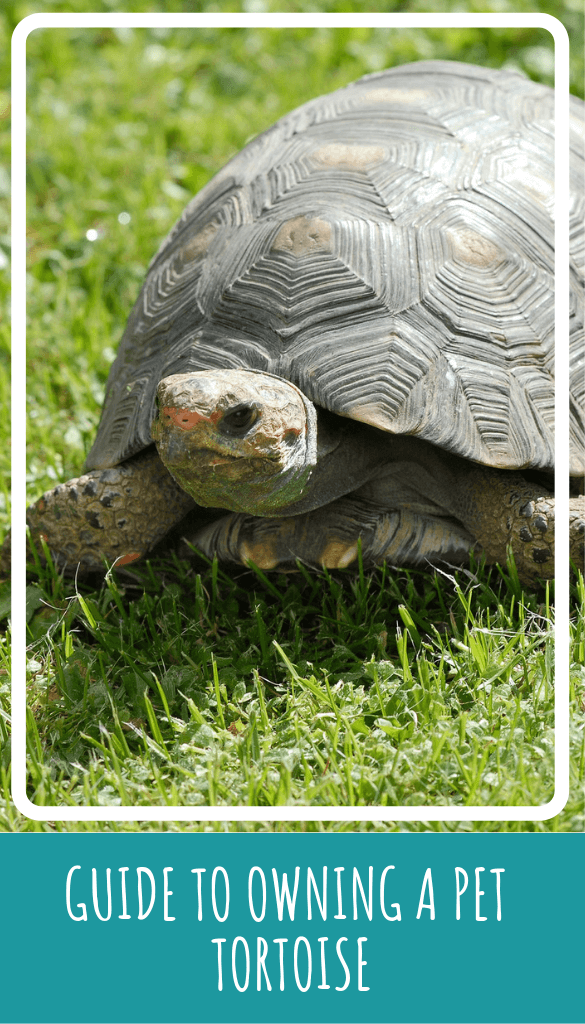
It keeps their bodies strong and healthy while helping them digest food. It helps in growing that gorgeous protective shell and keeping her body healthy.

Its important to note that every tortoise species is unique and special and they require different kinds of environment and care approaches.
How do you keep a tortoise as a pet. Nighttime temperature should be between 65 and 75 degrees Fahrenheit on both sides. Daytime temperature should be between 75-85 F on the cool side. Daytime temperature should be between 95-105 F on the warm side.
How to keep your tortoise hydrated. Your tortoise needs to stay hydrated especially when its a baby. Adult tortoises should have a fresh bowl of water regardless of whether they are inside or outside and baby tortoises should be soaked in water regularly.
When you first bring home your baby tortoise you should bathe it a couple times a week. Set up a baby bath temperature bowl of water reasonably shallow so that your tortoise has its head above the surface and place your tortoise. You have two choices.
Set up a small tortoise house inside make sure youve installed a UVB lighting system to keep your tortoises warm and. Set up a tortoise conservatory this looks something like a miniature cloche and can be made out of a fairly tough. You can ensure your pet tortoise gets enough calcium by giving it calcium supplements specifically designed for domestic tortoises such as processed eggshells or cuttlefish bones.
These can be dusted over the tortoises regular feed always keeping to the recommended doses for your tortoise species. How often should you feed a tortoise. A responsible owner should always consider his or her lifestyle before getting a pet.
In a case of raising a tortoise considering your location and lifestyle is crucial. Its important to note that every tortoise species is unique and special and they require different kinds of environment and care approaches. In order to keep your tortoise in a temperate climate the pen must be placed in a very sunny location.
The floor should consist of soil as in the wild to enable burying and thermoregulation. Their life pattern in captivity is the same as in the wild. They leave the house in the early morning to warm themselves and then begin to eat.
Housing tortoises While many tortoise owners like to see their pets grazing around the garden in nice weather it is vitally important to provide a safe enclosure for your pet so that they can rest keep warm and vitally stay safe from predators. This needs to be fully enclosed. A pen without a lid is not sufficient.
Youll need to make sure it has an appropriate hibernating environment. Your turtle or tortoise will need fresh fruit vegetables mice and insects to eat. Turtles do not really interact with or particularly like humans.
Keep in mind that your pet will mostly interact with you only at feeding time. Soak your baby tortoise in water a few times a week. Tortoises need to stay hydrated especially when they are young.
When you first bring home your tortoise you should soak it in water a few times a week so it feels fully hydrated making sure to keep its head above water. For your pet tortoise added calcium is necessary. It helps in growing that gorgeous protective shell and keeping her body healthy.
Tortoises need this added calcium in their diets along with all that UVB and natural sunlight. It keeps their bodies strong and healthy while helping them digest food. You can keep a pet as a tortoise just like you can keep cats or dogs but you have to fully commit to taking good care of them.
They live for a long time hence if you do a good job you will have your pet for a lifetime. You must ensure that you rear your pet in an environment that matches its natural habitat. You can also buy your pet canned or pelleted turtle food and freeze-dried mealworms.
Tortoises on the other hand are herbivores and will require a mix of fresh vegetables about 80 percent of the diet and fruit 20 percent. Unlike other pets you might have turtles dont need to be fed every day. Whenever you are tempted to buy or bring home a tortoise call the sane part of your brain to reminds you that wild animals arent pet.
Should you have illegally a tortoise in your possession relinquish it to a responsible tortoise rescue. And should you come across a tortoise crossing a road leave it alone or move it out of the road. Give your pet a high-quality tortoise food that includes calcium and vitamin D3 supplements.
Wild tortoises also eat insects slugs and carrion but if you feed these critters offer them in moderation. Tortoises are primarily vegetarian. Never feed them a dog or cat food.
Change and clean its water pan daily and replenish it with filtered water. If you have a newly acquired tortoise you need to do your homework and really read up on the species of tortoise youve brought home with you. Everything about the species and how it interacts in its natural habitat will help dictate what housing temperature and of course diet for your new pet is suitable and will keep your tortoise.
Use an underwater heater to maintain water temperature. These are the best temperature ranges for turtles. Water temperature should be kept between 72 and 77 F 22 to 25 C day and night The wet side of your turtles habitat should be kept at 75 to 85 F 24 to 29 C.
Accordingly youll want to be sure you have enough space to provide your new pet before picking up a Greek tortoise of your own. Greek tortoises are largely herbivorous and they thrive best when provided with warm and dry conditions.